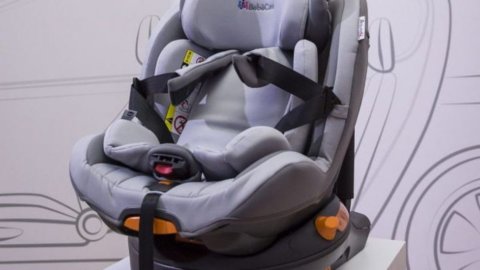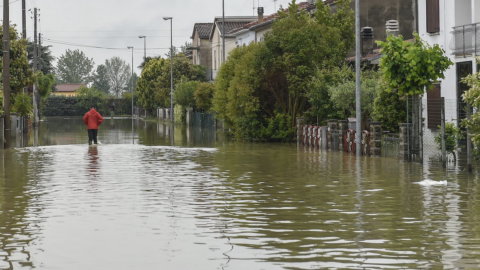The use of car restraint systems is regulated by the172 article of the Highway Code, the same rule that provides for the use of seat belts by all occupants of the seats of a vehicle. In particular, the cited article provides that all children under 1,50 meters in height must be secured to the seat with suitable (approved) restraint systems. These are accessories designed to protect the young passenger in the event of a road accident, avoiding injuries or even – in some cases – saving their lives.
The child is mainly supported on the side e everyone test. Depending on the model, the child seat may also have a special harness and various types of additional attachments inside the car. Typically, the seat is padded with a soft material such as foam and covered with fabric.
Use of the booster seat è compulsory – always based on the provisions of article 172 of the Highway Code – and the model to be used depends on the age, weight and height of the child. In fact, the seats are divided into groups: group 0, 0+, 1, 2, 3.
Il group 0 includes models for babies and toddlers weighing up to 10 kg, who will have to lie down inside them. These models are usually secured to the vehicle with a seat belt or system ISOFIX that is, with a standardized international fastening system, which offers the safest, easiest and fastest way to correctly install a child seat in the car without using the vehicle's seat belts. Group 0 child seats can also be placed in the front passenger seat, but the airbag corresponding to the non-driver's side must be deactivated.
Il group 0+ it is made up of strollers that must be mounted facing backwards. They are suitable for children weighing up to 13 kg and better support the child's head in the event of sudden braking. Again, the front passenger airbag must be deactivated. These models can also be fixed with seat belts or with the special ISOFIX hooks.
Il group 1 includes models for children weighing from 9 to 18 kg. These seats are fitted facing the rear of the car, with the child seated inside. The front passenger airbag is usually deactivated. The seat belts are used to secure the seat. The child is best held in a five-point harness.
Group 2 includes larger stroller models, which generally require the child to sit facing the direction of travel. These accessories are suitable for passengers weighing between 15 and 25 kg.
Il group 3 is that of the so-called booster seats, i.e. simple seats that allow the child to use the seat belt, in the right and most comfortable position. These models are suitable for children aged between 4 and 10 years and weighing between 22 and 36 kg.
For accident data, refer to the slides of the Road safety awareness campaign of the Ministry of Health in collaboration with the State Police.
We must also not forget that the Parliament, with the law 117/2018, introduced theinstallation requirement of devices to prevent the abandonment of children in closed vehicles.
Further information on this topic on www.AutoParti.it





